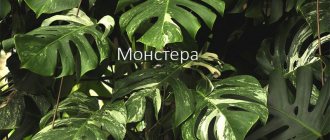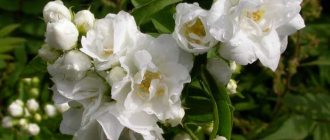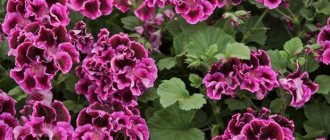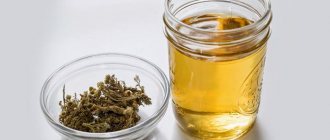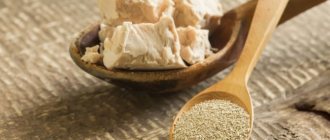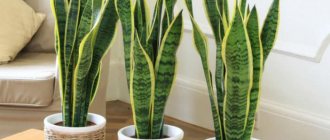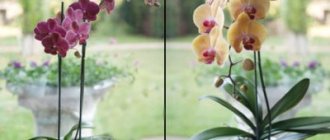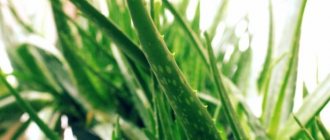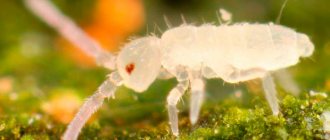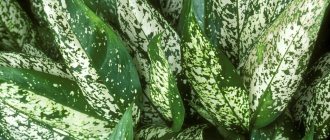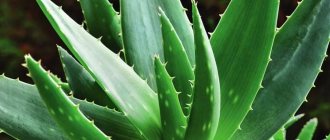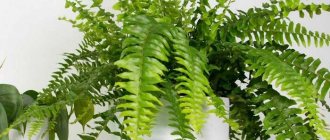Jasmine is a shrubby plant from the Olive family. In the wild, it is distributed in the tropics and subtropics in both hemispheres. It is impossible to find real jasmine in the middle zone and further north. It is grown from seeds in greenhouses, greenhouses and houses.
In garden conditions, a plant with a similar aroma is planted - mock orange. But the shrubs belong to different families, the flowers are easy to distinguish from each other.
Jasminum
Mock orange (Philadelphus)
The photo shows that jasmine has pistils and stamens hidden in an elongated tube. In mock orange, after the bud opens, they are clearly visible.
There are 198 species of shrubs. The following are common:
- Sambac, Arabian or Indian jasmine. A climbing plant native to Pakistan, India, and the eastern Himalayas. The buds are white with a strong aroma.
- Italian yellow. Shade-tolerant species. The flowers are yellow.
- Shrub jasmine. Found in the Caucasus, Crimea, southern Western Europe, Syria, Israel, Georgia, Iran, Lebanon. It has yellow inflorescences and can withstand frosts down to -25 degrees.
- Holofloral jasmine. Originally from China, it has simple buds and is grown as an ornamental plant.
- White or medicinal. It has fragrant flowers and is used for the production of essential oil.
- Multi-flowered. Distributed in China. It has white fragrant buds.
- Madagascar. Grown as a houseplant.
Sambac, Arabian or Indian jasmine (Jasminum sambac)
Italian yellow jasmine (Jasminum humile)
Bush jasmine (Jasminum fruticans)
Jasmine (Jasminum nudiflorum)
Officinalis or white jasmine (Jasminum officinale)
Multifloral jasmine (Jasminum polyanthum)
Madagascar jasmine (Stephanotis floribunda)
Jasmine flowers are very popular in Asia and are called the “kings of fragrances.” In Pakistan, Indonesia and the Philippines they believe in their magical powers and are considered national symbols. In these countries, the shrub is called “Chambeli”, “Melati”, “Sampaguita”.
The healing properties of the plant were discovered in ancient China. All its parts were used for treatment, but the most popular remedy was jasmine tea made from flowers. Today he is known in all countries of the world. Below we will talk about the beneficial properties of the plant, possible harm, rules for preparing and drinking a drink from flowers.
Useful, medicinal properties
In folk medicine, multi-flowered and medicinal types of jasmine are used. The fruits of the bush are inedible, but the roots are used in the preparation of medicinal infusions with an analgesic effect. The leaves serve as raw materials for the creation of wound healing agents.
This is how jasmine is grown in China
Industrial collection of jasmine in China
Jasmine processing in Fujian Province (China)
This is how jasmine flowers are sold in India.
The flowers of the plant are widely used. They are used to make healing and tonic fragrant teas, cosmetics and aromatic liquids. What are the health benefits of jasmine:
- Improves mood and gives vigor.
- Prevents the development of oncology.
- Strengthens the immune system.
- Prevents the formation of cholesterol plaques and blood clots.
- Accelerates the production of digestive enzymes and the breakdown of fats.
- Normalizes blood circulation.
- Activates brain activity.
- Removes excess fluid from the body.
- Increases reproductive function.
- Improves intestinal function, stimulates peristalsis.
- Prevents the accumulation of toxins.
- Strengthens blood vessels and maintains their elasticity.
Features of benefits for women and men
Useful properties of jasmine for women:
- Relief during menopause. Drinks with flowers help cope with mood swings, maintain clarity of consciousness, and get rid of hot flashes.
- Relieving menstrual pain, eliminating pathologies of the reproductive system. The smell of jasmine tea reduces spasms, and the substances it contains relieve inflammation during genitourinary infections.
- Reducing the risk of developing breast cancer. Jasmine contains antioxidants that prevent the formation of malignant cells.
For men:
- Preventing the development of prostatitis. The drink promotes blood flow to the genitourinary organs, reduces the intensity of inflammation, and accelerates the elimination of diseases that provoke pathology.
- Normalization of reproductive functions, improvement of potency. Herbal remedies are used as a natural aphrodisiac.
- Increased performance. The drink tones up and improves the speed of thinking.
What are the benefits of jasmine?
Jasmine is a tropical plant that does not grow in our area. The Indians call this flower “moonlight,” thus emphasizing its graceful inflorescences and wonderful scent.
Jasmine with yellow flowers is not used at all for medicinal purposes. Plants with very large semi-double flowers are also unsuitable. Only multi-flowered or medicinal jasmine is beneficial.
Healing properties
Almost all parts of this plant have medicinal properties, from the root to the flowers. Salicylic acid has an anti-inflammatory effect. This plant is also a good antiseptic thanks to benzoic acid, and equenol provides an antibacterial effect.
Jasmine is used quite widely in medicine. For example, this plant is necessary for the manufacture of medicines for hepatitis, cirrhosis of the liver, and is also used for abdominal pain. With the help of jasmine you can also suppress apathy, normalize sleep and strengthen the nervous system.
Preparations based on this plant are also used for low blood pressure and allergy outbreaks. In folk medicine, jasmine is used in the treatment of scurvy, rheumatism, to cleanse the blood and wash the eyes. A decoction of the flowers and leaves of this plant is widely used in the treatment of chronic bronchitis and bronchial asthma.
The aroma of jasmine also has a beneficial effect on the nervous system; it can lift your spirits and give you a feeling of joy. That is why the oil of this plant is widely used in aromatherapy. You should not inhale the scent of jasmine for a long time, as it may cause a headache. Therefore, it is not recommended to spray the scent of jasmine in the bedroom.
A properly prepared decoction from the flowers of this plant can increase the secretion of breast milk, and a decoction from the leaves can stop it.
ethnoscience
A decoction of this plant helps against dysentery and colitis. On one leaf of the plant you need to take a glass of boiling water, pour it over it and boil for 2 minutes. You need to take 2 tablespoons of the decoction three times a day before meals.
For bronchial asthma or bronchitis, you need to take a tablespoon of dry jasmine shoots and leaves, chop them and pour a glass of boiling water. Boil the infusion for 5 minutes and leave it for an hour, then strain. You need to take 2 tablespoons of infusion three times a day before meals.
If you have a severe cough, you need to take syrup from the flowers of this plant. Half a glass of flowers should be poured with a glass of boiling water and boiled for 4 minutes. After this, you need to quickly strain and squeeze out the flowers, add half a glass of sugar to the broth and heat until the sugar dissolves. You need to take 1 teaspoon of syrup three times a day.
Inhalation with jasmine oil will help you regain your lost voice.
An infusion of fresh jasmine and lavender flowers helps with insomnia and nervous overexcitation. You need to take 2 tablespoons of herbs and pour a liter of boiling water over them, cover with a lid and leave for half an hour, then strain. You need to take a bath with this infusion.
Jasmine tea will help relieve fatigue. It is enough to mix dried jasmine flowers with green tea and drink it in the morning to feel energetic again.
Jasmine will also help get rid of calluses and tumors. It is enough to knead one leaf of this plant well and tie it to the sore spot, changing the bandage every 6 hours.
Beauty Recipes
In the fight against chapped hand skin, cosmetic oil made from linden, rose petals, jasmine and corn oil is useful. All ingredients must be mixed and left in the sun for 3 hours, then store the oil in the refrigerator.
A tonic infusion of green tea with jasmine will also be useful. If you have oily or inflammation-prone skin, you should wipe it morning and evening with this infusion. You can also freeze it in ice cube trays and rub pieces of ice on your face and décolleté.
If you liked our article and have something to add, share your thoughts
It is very important for us to know your opinion!
Contraindications and possible harm
Jasmine tea can bring not only benefits, but also harm to health.
Contraindications to the use of products from the flowers of the bush:
- Allergy to the main component or individual intolerance to substances contained in its composition.
- Pathologies associated with cardiac arrhythmia. Jasmine can cause increased heart rate and increased blood pressure.
It is beneficial to drink 2-3 cups of jasmine tea per day. You should avoid taking the drink at night: it provokes insomnia.
Abuse of jasmine affects the body as follows:
- Causes exacerbation of gastrointestinal diseases.
- Increases blood glucose levels.
- Disturbs the water-salt balance.
Composition and calorie content
The aromatic plant is distinguished not only by its wonderful fragrant aroma, but also by its rich composition of minerals and vitamins. Jasmine contains:
- biologically active natural compounds;
- essential oils;
- organic acids – benzoic, salicylic, formic.
The healing properties of the plant have a beneficial effect on all body functions. Since ancient times, jasmine flowers have been used in medicine and cosmetology.
The calorie content of the product is very low - 100 grams contain only 1 kcal. Brewed tea contains 8 kcal per 250 ml.
Pregnant and lactating
Green tea with jasmine can be both beneficial and harmful to a pregnant woman.
Pros of the drink:
- eliminates swelling;
- normalizes emotional state;
- strengthens the immune system;
- improves digestion.
Cons of tea:
- increases blood pressure;
- provokes insomnia;
- can cause an allergic reaction;
- creates a load on the kidneys.
Before use, you should consult your doctor. If there are no contraindications, you can drink weak tea with flowers 1–2 cups per day.
During breastfeeding, you should avoid drinking this drink. Active compounds penetrate into milk and enter the child’s body. Jasmine contains substances that can cause allergies, nervousness and insomnia in a baby.
Legends and symbolism of Jasmine.
The ancient Greeks decorated the temples of the goddess of wisdom, Athena, with jasmine.
In Christian culture there is a tale that the jasmine bush is an angel descended from heaven, and it is also considered the flower of the Virgin Mary. In Thailand, jasmine symbolizes the image of the mother, and in China it symbolizes femininity and elegance. The Tatars believed that not everyone could plant and grow a jasmine bush. And the one who succeeds is guaranteed heaven after death. The peoples of Asia consider jasmine sacred. In India, jasmine is perceived as a symbol of love and night secrets. According to legend, the young and beautiful Jasmine fell in love with the Sun God. He did not reciprocate the girl's feelings. The refusal burned her and took her life. The saddened Sun God carefully collected the ashes and in its place a bush of amazing beauty blossomed. But it bloomed only at night, when the sun was hidden. This is how a girl’s soul yearns for her beloved. Eastern peoples see jasmine as a flower of love and sensuality; it awakens sexual desire and love between spouses in marriage. Jasmine is recommended to decorate wedding ceremonies and the newlyweds' bed.
Jasmine appeared in Russia during the reign of the Romanov dynasty. His seedlings were delivered from Germany as gifts from ambassadors. Since then, jasmine has been planted in gardens and parks for decorative purposes of decoration and landscaping.
Is it possible for children
Jasmine tea should not be given to children under 3 years of age. In children, the drink provokes excitability and sleep disturbance. From 4–6 years old, 1 cup per day in the morning is allowed. Tea helps:
- reduce the risk of colds;
- activate brain function;
- accelerate the decrease in temperature during acute respiratory infections, influenza;
- prevent digestive disorders.
Children of primary and senior school age can drink 2 cups per day if they are not allergic to the plant.
Recommendations from nutritionists for losing weight
When losing weight, drinks with jasmine are recommended to be consumed instead of black tea or coffee. Benefit:
- accelerates fat burning processes;
- prevents decreased immunity;
- normalizes digestive functions;
- eliminates the development of nervous disorders;
- relieves the body of toxins.
To speed up the process of losing pounds, flowers are added to green tea. The drink should be prepared without sugar or other sweeteners.
Jasmine is recommended for:
- Insomnia, nervous disorders and hysteria.
- ARVI, flu and colds.
- For sore throat and inflammation of the bronchi.
- Inflammation of joints and muscles.
- Open wounds, scratches and cuts.
- For gynecological diseases.
- Decreased sexual desire, impotence.
- For dermatitis and skin diseases.
- Hemorrhoids.
- Cirrhosis of the liver.
- Loss of strength and exhaustion.
Jasmine is beneficial, but you should be careful with its use.
When to collect and how to dry
Jasmine begins to bloom 2 years after planting. The peculiarity of the bush is that the buds bloom at night, so you need to collect the raw materials before sunrise.
Procurement rules:
- We cut flowers in dry weather, at 4–5 am. We select half-opened or blossoming buds without signs of spoilage. We place the raw materials in a wide container so that the flowers are not damaged by tamping.
- We dry the buds under a canopy on the street or at home in a ventilated area for 4–5 days. During preparation, periodically carefully turn it over so that moisture does not accumulate below and provoke rotting processes.
You cannot speed up the process using an oven or electric dryer: you can burn the delicate petals. Store the finished raw materials in a closed tin or glass jar or canvas bags away from direct sunlight and moisture.
Description of the jasmine plant
The jasmine plant is famous for its amazing fragrant aroma. Its homeland is Asian, American and African subtropics. The evergreen shrub, depending on the variety, is decorated with white, yellow and pink flowers: simple, semi-double and double.
In indoor floriculture, the most common is jasmine multiflorum. The plant grows unpretentiously and is propagated by cuttings. It looks like a vine, blooming with superb white star flowers. An equally popular variety is Arabian jasmine. The plant is distinguished by fragrant flowers. The variety was developed by the Chinese before our era. Jasmine blooms throughout the year and fills the room with an incomparable fragrance.
Jasmine flowers bloom at night. At this time, the amount of essential oils in them is maximum. For this reason, they have to be collected either early in the morning or in the dark.
How to choose jasmine tea
In stores you can buy loose leaf and bagged tea with jasmine flowers. Pure raw materials are rarely sold. When choosing a product, it is better to give preference to luxury goods in loose form or in cardboard packages. The disadvantage of tea bags is the inability to evaluate the quality. The product may smell like jasmine, but contain fragrance instead of petals.
Selection rules:
- Study the composition of the raw materials in the box. It should not contain dyes or flavor enhancers.
- Consider the appearance of weighed raw materials. A high-quality product is crumbly, does not contain small particles, jasmine petals or buds are visible.
- Prefer goods made in China (Fujian province).
The best varieties of green tea with jasmine
Among the best Chinese varieties of jasmine tea are the following:
- Moly Yin Hao (“Silver Fibers”). It is made from young shoots of tea bushes, which are scented with flower petals during joint drying in a hermetically sealed room.
- Moli Zhen Zhu (“Jasmine Pearls”). Prepared from top tea leaves and jasmine. It has a tart taste and strong aroma.
- Chun Hao Wang (“Royal Jasmine”). Produced from a bud with a top leaf (flesh). The raw materials are dried with flowers, then the dried petals are taken out and fresh ones are added, and so on several times. The mixture produces an olive-colored infusion with a sweetish taste and strong aroma.
- Moly Zhen Luo (“Jasmine Snail”). For production, half-bloomed leaves are used, which curl when dry. Production takes place in 2 stages: in early spring, the raw materials of tea bushes are picked and prepared, and in summer flowers are added to the product.
- Moli Da Bai Hao (“Jasmine White Fluff”). Made in Fujian Province. The basis of the tea is large-leaf Bai Hao, which is aromatized three times with flower buds. The drink has a golden hue and a delicate taste.
- Moly Xue Gong Zhu (“Jasmine Snow Princess”). Made from large leaves, it retains its aroma after several brews.
- Chinese tea "Dragon Pearl". It is made from tea bushes that are adjacent to jasmine plantations and are filled with aroma during the growth process. During production, the raw materials are rolled into balls and scented with flowers. The buds are removed before packaging.
- Hou Wang (The Monkey King). Tea from Fujian province. Popular in China, it is distinguished by the presence of special codes on each package.
- Tian Zhen. Made from cut tea leaves during jasmine flowering.
Tea “Jasmine pearls”
Brewing tea while maintaining maximum benefits
Jasmine petals are thin and delicate; if brewed incorrectly, they lose their benefits, aroma and pleasant taste. The drink can be prepared in clay or porcelain containers, but the maximum amount of active compounds is preserved when using a thermos with a glass flask. A metal container is undesirable: useful elements will begin to collapse upon contact with the walls of the vessel.
Instructions for brewing jasmine tea:
- We heat the water to 70 degrees.
- Take a 500 ml thermos and pour boiling water over the inside.
- Pour 3 teaspoons of raw materials into a container.
- Fill with hot water.
- Close the thermos and leave for 30 minutes.
It is better to drink tea from porcelain or glass cups: iron containers help destroy active compounds, and earthenware absorbs the aroma of flowers. To prepare the drink, you need to use only purified water: impurities can spoil the delicate taste of jasmine.
Classic brewing methods, recipes
Classic recipes:
- With the addition of black, green, white tea. Take 4 teaspoons of leaves, 2 teaspoons of flowers, mix, pour into a porcelain teapot. Pour in 800 ml of water heated to 80 degrees. Leave for 10 minutes, strain.
- With mint, lofant, fireweed tea. Ingredients: lofant grass, jasmine, mint, fireweed tea 1 teaspoon each, 600 ml hot water. Pour the raw materials into a thermos, fill with liquid, leave for 30 minutes. Strain before use.
- With goji fruits. Preparation: mix several jasmine buds with 1 teaspoon of green tea and 2 goji berries. Pour the mixture into a kettle, pour 450 ml of water heated to 80 degrees. Let it sit for 5 minutes.
- With milk. We use our favorite type of green tea with jasmine. Fill the raw material with hot water (70–80 degrees), leave for 5 minutes. Strain and dilute with warmed milk in equal proportions.
Jasmine Pearl (Jasmine Dragon Pearl)
Mo Li Long Feng Zhenili Hua Long Zhu (Dragon Jasmine Pearl) is one of the most popular and beloved varieties in China, known more than 800 years ago. The tea belongs to the oolong group and undergoes 100-day aging technology with jasmine flowers. To prepare the Pearl, only the top two leaves of the tea tree, collected in early spring, are used. The tea is rolled into small pearl-like balls.
Disease Prevention
Jasmine drink eliminates the risk of developing pathologies. Features of prevention with flower tea:
- Cancerous tumors. The buds contain substances with antioxidant properties. To reduce the likelihood of developing cancer, you need to drink 1 cup of herbal tea 2 times a day.
- Gastritis. During an exacerbation of the disease, it is not recommended to drink a drink with jasmine, but to eliminate repeated inflammation, you should take 2-3 cups a day.
- Pancreatitis. For prevention, choose the highest grades of green tea with jasmine. Brew the drink in a thermos for 15 minutes at the rate of 1 teaspoon of raw material per 400 ml of water, so that it turns out weak. Drink 2 cups per day in the morning. You cannot add milk, honey or berries to the drink.
- Diabetes. In case of illness, the maximum dose is 1 cup per day. It helps support digestion and strengthen the immune system. In large quantities, the drink is harmful, as it stimulates an increase in glucose levels in the body.
- Skin diseases. To eliminate pathologies, use alcohol tincture with jasmine. We prepare it like this: pour 150 g of flowers with 150 ml of alcohol, put the container with the liquid in a dark place for 7 days. We wash wounds and cuts with the prepared product. Apply lotions to the inflamed skin.
- Varicose veins The drink prevents the formation of blood clots and strengthens the walls of blood vessels and veins. For prevention, it can be consumed up to 5 times a day.
- Bronchial asthma. Jasmine helps reduce the risk of development and exacerbation of pathology, relieves symptoms. Classic tea with flowers helps with prevention. The disease is treated with a decoction of the buds, prepared in a water bath.
Effect on stomach cancer, study
In 2009, a group of specialists from the USA and China published the results of studies on the effect of jasmine tea on the formation and development of stomach cancer. Experts did not find convincing evidence that jasmine reduces the risk of cancer of the upper esophagus and gastric adenocarcinoma, but they did find a slowdown in the spread of malignant cells in squamous cell oncology of the esophagus.
Use in folk medicine
In folk medicine, varieties of jasmine are used to treat many ailments. The main positive properties of the medicinal plant:
- antiseptic;
- pain reliever;
- antipyretic;
- diuretic;
- sedative.
Various parts of the plant are effective in treating the following diseases:
- Dermatitis, eczema, skin wounds, irritations.
- Hormonal imbalances.
- Nervous system disorders, anxiety, stress, insomnia.
- Bronchitis, pneumonia.
- Migraine.
- ORZ.
- Rheumatism.
- Avitaminosis.
- Phlebeurysm.
- Overwork.
- Pain due to intestinal disorders.
Traditional medicine recipes use not only jasmine inflorescences, but also leaves, cuttings, shoots, stems, and roots of a valuable plant.
Recipes:
- A decoction of leaves and inflorescences. For one glass of boiling water, take 1 tbsp. a spoonful of crushed jasmine leaves and flowers. Cook the broth over low heat for about 7 minutes. Remove from heat and leave for at least 1 hour. Used for rheumatism, neurosis, bronchial asthma.
- A decoction of leaves and branches. For 250 ml of water take 1 tbsp. a spoonful of pre-crushed raw materials. Cook over low heat for 5 minutes. Infuse the decoction for an hour. Strain. Drink 2 tbsp. spoons three times a day before meals. Used for bronchitis.
- Root decoction. Pour one liter of water into 2 tbsp. spoons of dry crushed root. Cover the pan with a lid and brew the broth. Keep on low heat for 10 minutes. Remove from the stove and let sit for 2 hours. Strain. This recipe is effectively used to treat hemorrhoids. Part of the drink - take 50 ml orally. Drink three times a day before meals. Use the remaining broth for warm baths. They should be taken for no more than 20 minutes at a temperature of 37°C. A decoction of jasmine roots is used as a pain reliever. It helps with aching joints, insomnia, migraines, and stretch marks.
- Alcohol tincture of jasmine flowers. For this recipe you will need freshly picked inflorescences. So, pour 100 g of raw material into 100 ml of 70% alcohol or vodka. Infuse the medicine for one week, shaking from time to time. Strain. For dermatological diseases, lotions should be made from alcohol tincture. Take 1 teaspoon of the product and dilute it in 100 ml of water. Apply lotions to problem areas.
If you have a weakened immune system, it is recommended to add vodka tincture to tea.
Jasmine – description with photo of the flower; its beneficial properties and contraindications; benefit and harm; recipes for use in cooking and treatment
Essential oil
Jasmine essential oil is an expensive product. To make 100 g you need 100 kg of fresh flowers. The product has pronounced antiseptic, anti-inflammatory, and analgesic properties. Due to its beneficial properties, jasmine essential oil has found wide use in cosmetology, gynecology and psychotherapy.
Examples of using:
- Preparation of body and hair care products. To enhance the aroma, jasmine is supplemented with neroli oil and magnolia extract.
- Perfumery production. When making products, the hydrolate left over from the evaporation of essential oil is used.
- Aromatherapy.
- Treatment of skin inflammations. Jasmine oil helps girls and boys get rid of teenage rashes on their faces.
- Preparing drinks with an analgesic effect.
The effect of the smell of jasmine on humans
The aroma of jasmine has a calming effect and increases libido. The effect of the scent depends on the method of application. Adding concentrated flower tea to your bath can help you relax. The herbal remedy is used during water birth: the woman endures contractions more easily and concentrates on the process. Aromatherapy sessions with flower oil increase libido in men and women.
What are the health benefits of jasmine tea?
- Anti-stress tea, relaxes and calms.
- Thanks to catechins, jasmine tea reduces triglycerides and cholesterol.
- Improves and cleanses the skin, removes toxins from the body. Tea can be used to wipe problem areas of the skin.
- Jasmine tea reduces nervous tension, is a natural sedative, and also reduces the risk of postpartum depression.
- Used in dietetics, helps reduce weight and fight obesity.
- Jasmine tea is a herbal immunomodulator that has a preventive effect against flu, colds, and allergies.
- Jasmine is recommended for use by women during menopause.
- Tea has a beneficial effect on the stomach, enveloping and preventing processes leading to ulcers.
Ingredients of jasmine tea:
- vitamins A, B, C
- beneficial amino acids and organic compounds
- potassium, magnesium, calcium and other minerals
- essential oils
- organic compounds
- amino acids
- alkaloids
- tannins
- vegetable protein
- catechins.
With all this, one cup of jasmine tea contains about 3 kcal, has a positive effect on the nervous and digestive systems, fights fatigue and improves the body's protective properties. Jasmine tea is equally good in summer and winter; in cold weather it warms, and in hot weather it gives freshness and quenches thirst, reduces high fever during flu and colds.
Jasmine tea is equally good in green and black leaves. Not for everybody, as they say. It is not recommended to drink it late in the evening; caffeine can lead to insomnia or agitation.
Instead of a conclusion.
Jasmine is the king of summer and gardens, it has many faces, is a multivitamin and has found application in medicine, cooking, dietetics, and cosmetology. Jasmine tea is a source of inner harmony and health. Snow-white petals are valued not only for their fragrance, but also for their beautiful appearance, symbolism and its meaning in different countries and parts of the world.
You should brew tea carefully and carefully, having read the prohibitions and warnings, especially for nursing mothers or pregnant women. Drink tea in moderation and wisely, no more than 1-2 liters per day
Tea has an anti-inflammatory, calming and analgesic effect, reduces fever and increases sexual desire, helps women fight migraines and severe premenstrual pain.
Jasmine – surprises with its simplicity and versatility, lightness and importance
Thank you for your attention and be healthy
Jasmine in cosmetology
In cosmetics, jasmine is used to tone the skin, prevent inflammation and rejuvenate, and strengthen hair. Flowers give the products a pleasant subtle aroma.
Homemade cosmetics recipes:
- Acne mask. Ingredients: 2 drops of essential flower oil, 15 g of black bread crumb, 25 ml of whey. Preparation: soak the bread in warm whey, add butter, knead until smooth. Apply the mask to the face and keep it on for 30 minutes. Wash off with clean water.
- Rejuvenating agent. Ingredients: jasmine oil - 2 drops, 1 teaspoon coconut oil, 1 tablespoon gelatin. Preparation and use: dissolve all components in warm water, when the mass begins to harden, apply to the skin. Leave for 35 minutes, rinse with warm water.
Use in folk medicine
When overtired
You can prepare an oil infusion from jasmine flowers:
- To do this, the inflorescences are placed in a jar and filled with vegetable or olive oil.
- Close the lid tightly and wrap the container in dark paper.
- The product is infused for 40 days. In this case, you should shake the composition 2 – 3 times a day.
- After this time, the solution is filtered and all tense areas of the body (temples, forehead) are lubricated with it.
Relaxation occurs within 2 – 5 minutes.
For insomnia
For troubled sleep, you can prepare the following composition:
- 1 tbsp. dried jasmine flowers;
- 2 tbsp. lavender herbs;
- 1 l. boiling water
Mix the ingredients and pour boiling water over it, leave for 30 minutes, after wrapping it in a warm blanket or towel. Strain and pour into the bathroom. Every day for 10 days, take a relaxing bath for 20 minutes a day before bed. Improved sleep occurs after the first procedure.
Important! Do not exceed recommended doses, as this may cause the opposite effect. Too much jasmine is stimulating.
For dermatitis
A teaspoon of the product is diluted in 100 ml of water and used for rubbing. You can simply leave the lotion in a certain place for 2 - 3 minutes.
A medicinal bath with the addition of a glass of dried inflorescences, a few drops of rose essential oil and 100 g of uncolored sea salt also helps with dermatitis. You should take bath procedures 2 times a day, morning and evening, for 10-15 minutes each. After 2–3 sessions, the skin will noticeably improve and the dermatitis will subside.
What are the benefits and how to prepare essential oil?
You can make your own essential oil from garden jasmine, but to do this you need to follow a certain technology. Flowers in a certain quantity are placed in a clean glass jar and poured with a small amount of vegetable oil to cover the entire contents of the jar. This product should stand in a warm place for a month and a half.
The oil is very useful. It can be used externally. Rub into the skin to relieve cold symptoms, to reduce headaches, chapped skin, and cramps.
You can make a face cream based on jasmine oil. To do this, add 3 drops of oil to 10 ml of fatty cream and mix well. This composition is used 2-3 times a day, rubbing the cream into the skin of the face and décolleté. After 1 – 2 weeks of regular use, the number of wrinkles is noticeably reduced, the skin is smoothed and acquires a uniform color.
Self-medication can be life-threatening!
Brief conclusion
Jasmine is a shrub with beautiful flowers. It is used to decorate gardens and houses. The greatest value of the plant is the beneficial properties and pleasant aroma of the buds. Jasmine helps reduce the likelihood of developing heart pathologies, eliminate inflammatory processes, speed up recovery from colds, and improve digestion. The aroma of flowers calms and increases libido.
If used incorrectly, the plant is harmful. Jasmine is contraindicated for people with allergies to flowers; if consumed uncontrolled, it causes exacerbation of stomach pathologies and increased symptoms of diabetes.
How to brew correctly
Brewing is the most responsible process that does not tolerate any errors or inaccuracies. The taste of the drink and its healing properties depend on how correctly this procedure is carried out.
The first and main rule is not to use boiling water. It is truly destructive to the most delicate jasmine petals, capable of destroying the substances and microelements included in their composition. The optimal brewing water temperature is 80 degrees.
The tea leaves are transferred to a special teapot and lightly stirred to enhance the aroma. Next, liquid is poured into the container (one liter, as a rule, requires two to three teaspoons of tea leaves). The average infusion time is about six minutes; readiness is determined by the degree of opening of the buds, as well as personal preferences for strength and richness.
